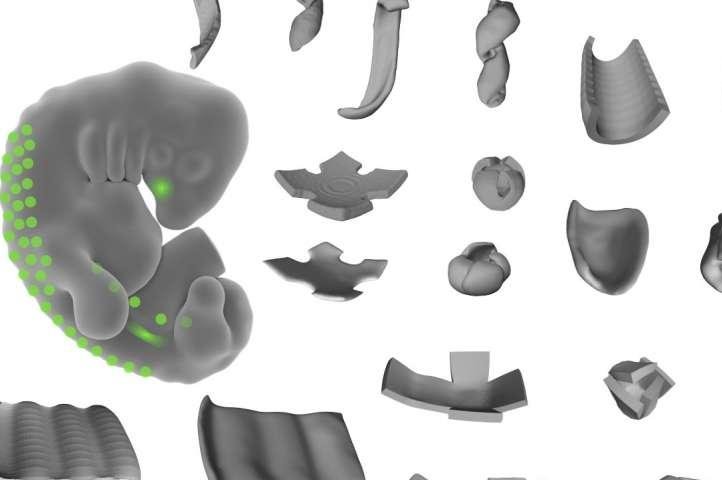Using the predictable movements of mammalian cells as a their guide, researchers designed self-folding layers of living tissue capable of forming a variety of 3D shapes. Photo by Alex Hughes/UCSF
Dec. 28 (UPI) -- Scientists at the University of California, San Francisco have developed a technique for creating 3D shapes out of living tissue.
Mammalian cells move and behave in predictable ways. By arranging mechanically active cells into matrix-like layers of fibers, scientists were able to create self-folding shapes. The tissue mimics developmental processes, assuming a variety of shapes, including bowls, coils and ripples.
"Development is starting to become a canvas for engineering, and by breaking the complexity of development down into simpler engineering principles, scientists are beginning to better understand, and ultimately control, the fundamental biology," UCSF researcher Zev Gartner said in a news release. "In this case, the intrinsic ability of mechanically active cells to promote changes in tissue shape is a fantastic chassis for building complex and functional synthetic tissues."
Many labs and material scientists have designed 3D structures out of living tissue, but micro-molding and 3D printing techniques yield products without important structural qualities. By allowing the tissue layers to self-shape, scientists can ensure the finished product features all of the expected qualities.
The method mimics the hierarchical choreography of animal cells during developmental processes. Scientists dubbed the method "DNA-programmed assembly of cells," or DPAC.
"We're beginning to see that it's possible to break down natural developmental processes into engineering principles that we can then repurpose to build and understand tissues," said Alex Hughes, a postdoctoral fellow at UCSF. "It's a totally new angle in tissue engineering."
Hughes and his colleagues detailed the new process in a paper published this week in the journal Developmental Cell.
Scientists were surprised to find the complex arrangement of cells to respond so simply and predictably.
"This idea showed us that when we reveal robust developmental design principles, what we can do with them from an engineering perspective is only limited by our imagination," Gartner said. "Alex was able to make living constructs that shape-shifted in ways that were very close to what our simple models predicted."
Researchers plan to look for and tap into new development patterns found during various stages of embryo development -- mechanical processes that could inspire new shapes and patterns.















